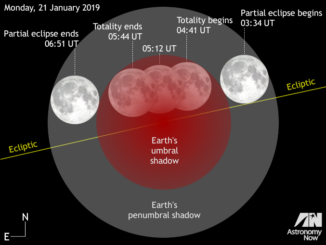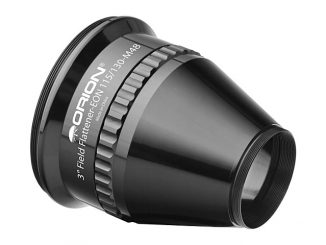
The Orionids radiant — the small patch of sky from which the meteors appear to radiate — is not within the main pattern of stars in Orion, but lies midway between them and the stars of Gemini. The radiant doesn’t rise above the horizon until about 10pm BST, and so few if any Orionids will be seen before that time, but thereafter observed rates will increase as the radiant climbs higher in the sky, with the best rates being seen before dawn. To see the most Orionids, look at an area of sky 30-40 degrees (twice the span of an outstretched hand at arm’s length) from the radiant and about 50 degrees above the horizon.
The Moon, having past First Quarter on 20 October, will be present in the western sky until around midnight at Orionids maximum, but will not affect observations later in the night.
Inside the magazine
You can find out more about observing the Orionids in the October edition of Astronomy Now in addition to a full guide to the night sky.
Never miss an issue by subscribing to the UK’s biggest astronomy magazine. Also available for iPad/iPhone and Android devices.




